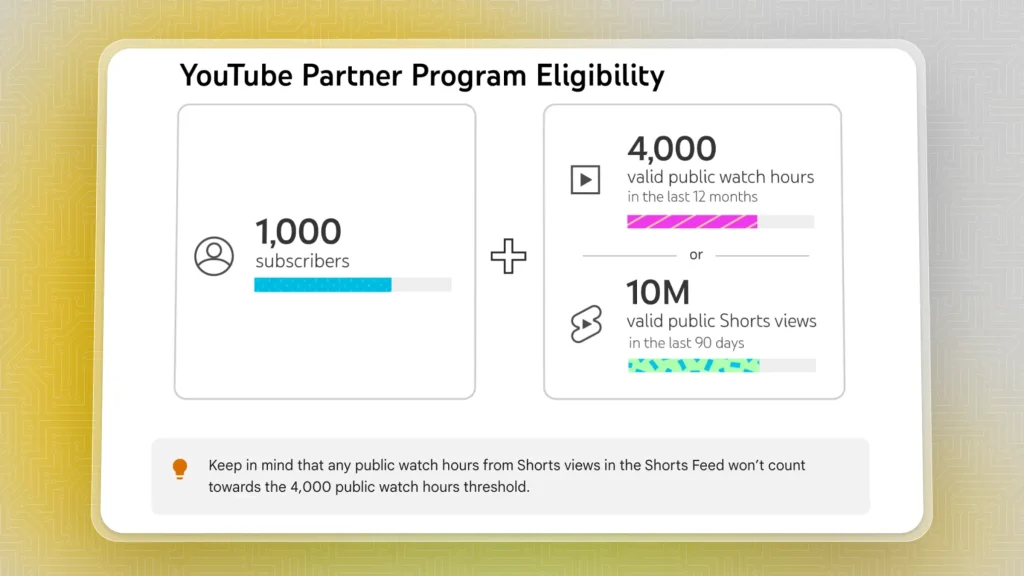
Videos for Affiliate Marketing

You probably:
- Just got started with affiliate marketing
- And you want to get into video
- But you’re not sure if they’ll pay off
Today, I’m going to help you with that — I was there once, and now I want to share everything I learned about videos for affiliate marketing. Consider this the freshest guide in 2024.
What are Affiliate Videos?
Answer: Affiliate videos are promotional videos for products or services, where the video’s maker earns a percentage of each sale he makes.
They typically include:
- Product Reviews: Detailed reviews showcasing the features, benefits, and personal experiences with the product.
- How-To Guides: Step-by-step tutorials demonstrating how to use the product effectively.
- Comparison Videos: Side-by-side comparisons of similar products to help viewers make informed decisions.
- Unboxings: Videos that show the unboxing experience, highlighting what customers can expect when they purchase the product.
- Testimonial Videos: Videos featuring satisfied customers sharing their positive experiences with the product.
Affiliate videos often include a call to action, encouraging viewers to click on an affiliate link to purchase the product. They can be shared on platforms like YouTube, short-form social media, or websites, driving traffic and sales for the affiliate marketer.
Example of an affiliate video:
Later in the video, Nick naturally talks about Thumbnail Test, a tool he’s using daily for his thumbnails and inviting people to use it.
Why do you need Video Content for Affiliate Marketing?
Answer: Video content is essential for affiliate marketing because it engages audiences more effectively, builds trust, and drives conversions.
Here’s why:
- Higher Engagement: Videos grab attention and keep viewers engaged longer than text or images. Platforms like YouTube Shorts, Instagram, and TikTok are optimized for video, helping you reach a larger audience.
- Demonstrates Value: Video allows affiliates to showcase products in real-life scenarios, making it easier for potential customers to understand their value and features.
- Builds Trust: Seeing a real person use and recommend a product creates a more personal connection, boosting credibility and trust with the audience.
- Boosts SEO: Some search engines prioritize video content, increasing visibility in search results and driving organic traffic.
- Increased Conversions: Video content is more persuasive and can simplify complex information, leading to higher conversion rates as viewers are more likely to make a purchase after watching.
How to Use Videos for Affiliate Marketing
The smartest strategy for videos in affiliate marketing contains 2 major steps: including the right content and promoting it.
Let’s discuss that.
Section 1: What to Include
1. Hook
Start your video with an attention-grabbing hook to capture your audience’s interest within the first few seconds. You can use a bold claim, ask a question, or tease a problem that the product or service will solve.
This sets the stage and makes viewers curious about the rest of the content. A strong hook helps reduce drop-off and keeps people engaged long enough to see the benefits of your offer.
2. Product/Service Overview
After the hook, introduce the product or service you’re promoting. Keep the explanation simple and to the point, highlighting what the product is, what it does, and why it’s relevant to the viewer.
Here’s an example:
This section should give enough information to let viewers understand the core offering without overwhelming them with details. Be clear and concise to maintain interest.
3. Benefits Over Features
Focus on the product’s benefits rather than just listing features. Explain how it will make the viewer’s life easier, save them time, or solve a specific problem they might have.
- People care more about what the product can do for them than its technical specs.
- For example, instead of saying “this blender has 1000 watts of power,” explain how “this blender can crush ice in seconds, making your smoothies faster and easier.”
4. Personal Experience
Adding a personal touch can build trust and create a connection with your audience.
Share your own experiences using the product.
- Did it solve a problem for you?
- What did you like about it?
- This makes your video more relatable and shows viewers you’re giving an honest review.
Personal stories resonate with viewers and can make them feel more confident about purchasing through your affiliate link.
5. Visual Demonstrations
Seeing is believing, and that’s why visual demonstrations are crucial in affiliate marketing videos. Show the product in action or provide a step-by-step tutorial on how to use it. Visual proof adds credibility to your claims and helps viewers understand how the product works in real-life scenarios.
It also helps those who prefer learning through seeing rather than just listening.
6. Call to Action (CTA)
Every affiliate marketing video should end with a strong, clear call to action. Tell viewers what you want them to do next—whether it’s clicking your affiliate link, signing up for a free trial, or purchasing the product. Make the CTA easy to follow and remind them of the benefits they’ll receive.
Phrases like “Click the link below to get started” or “Buy now to get 20% off” are effective and direct.
7. Testimonials or Social Proof
Including testimonials or user-generated content builds trust and social proof, making viewers more likely to act on your CTA. If possible, show positive reviews from other users or mention any ratings the product has. This helps to validate the product’s quality and provides a sense of reliability.
People are more inclined to buy something if they see that others have had good experiences with it.
8. Unique Selling Points (USPs)
Lastly, emphasize the unique selling points that set the product apart from competitors.
What makes this product better or different? It could be a specific feature, a price advantage, or a brand reputation.
Highlighting USPs ensures your viewers see the value of choosing this product over others, driving more conversions through your affiliate link.
Section 2: How to Promote
1. Leverage Social Media Platforms
Promoting your affiliate video content on social media is one of the most effective ways to reach a large audience. Choose platforms where your target audience is most active, such as YouTube, Instagram, TikTok, or Facebook. Post regularly, using relevant hashtags, and create engaging captions that encourage interaction. Repurpose your video into shorter clips for Stories or Reels to drive traffic back to the full video or your affiliate link.
2. Utilize Email Marketing
Email marketing can be a powerful tool for promoting your affiliate videos, especially if you have a growing subscriber list. Send out emails with compelling subject lines to grab attention, and include a short description of your video along with a CTA linking to it.
You can also embed videos directly into your emails to increase engagement. Be sure to highlight the value of watching the video and include a link to your affiliate product within the email.
3. Collaborate with Influencers or Partners
Collaborating with influencers or partners in your niche can dramatically expand your reach.

Partnering with someone who has a strong, engaged audience can boost visibility for your video and increase conversions.
You could exchange guest spots, shout-outs, or even have them share your video with their followers. Influencer collaborations are highly effective for building credibility and driving more clicks to your affiliate links.
4. Optimize for SEO
Search engine optimization (SEO) is crucial for ensuring your video content reaches as many people as possible.
- Focus on optimizing your video title, description, and tags with relevant keywords.
- Use phrases that your target audience is likely searching for, such as “best product for [specific need]” or “how to [solve problem]”.
By ranking higher in search results, more people will discover your video, which increases the likelihood of them clicking your affiliate link.
5. Share in Online Communities
Promote your video content in online communities where your target audience gathers, such as forums, Facebook groups, or Reddit. Provide value by sharing useful insights related to your niche, and include your video link where it fits naturally.
Avoid being overly promotional—focus on helping others with relevant content and subtly include your affiliate link within the video. Community engagement can lead to trust and more clicks.
6. Paid Advertising
Investing in paid advertising can significantly increase your video’s reach, especially if you’re targeting the right audience. Platforms like Facebook, Instagram, and YouTube allow for detailed targeting, enabling you to show your video to people interested in related products or services.
Start with a small budget, and test different video creatives to see what resonates best. Paid ads can be an effective way to boost views, clicks, and conversions when done strategically.
FAQ
1. Can you do affiliate marketing without making videos?
Yes, you can do affiliate marketing without making videos. You can use blog posts, social media, email newsletters, and even paid ads to promote affiliate products. However, videos often convert better because they engage viewers more.
If you want to leverage video content without showing your face, SendShort’s faceless video maker can help you create engaging videos quickly, allowing you to stay anonymous while maximizing your affiliate marketing success.
2. Can I use Amazon videos for affiliate marketing?
Yes, you can use Amazon videos for affiliate marketing through the Amazon Associates program. Here’s how:
- Amazon Product Videos: You can embed Amazon product videos on your website or blog to enhance your content. Ensure the videos are relevant to the products you’re promoting.
- Creating Your Own Videos: You can create your own videos featuring Amazon products, such as reviews or tutorials, and include your affiliate links in the video description or on-screen prompts.
- Using Amazon Influencer Program: If you have a social media presence, you can join the Amazon Influencer Program, allowing you to create a personalized storefront and share videos showcasing your recommended products.
- Linking to Amazon: Always include your affiliate link when promoting products to earn a commission on any sales generated through your content.
Make sure to comply with Amazon’s guidelines for affiliate marketing and disclose your affiliate relationship to maintain transparency with your audience.
3. How to create a video for affiliate marketing?
To create a video for affiliate marketing, follow these steps:
- Choose a Product: Select a product relevant to your niche.
- Plan Your Content: Decide on the video type (review, tutorial, etc.) and create an outline.
- Gather Equipment: Use a good camera or smartphone; consider tools like SendShort’s faceless video maker for anonymous content.
- Record and Edit: Film your video, ensuring good lighting and audio. Edit to include engaging visuals and a clear call to action.
- Optimize and Share: Write a compelling title and description with keywords, include your affiliate links, and share on platforms like YouTube and social media.
Thanks a lot for reading this,
David Ch
Head of the Editing Team at SendShort







